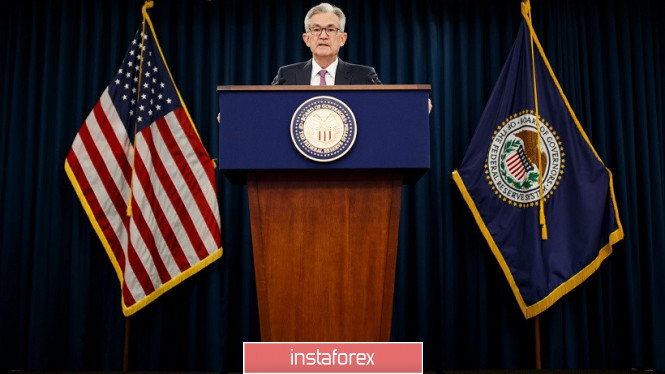
Dollar bulls ignored the release of data on rising US inflation today. The euro-dollar pair is waiting for meetings of the Federal Reserve and the European Central Bank, while the pound-dollar pair awaits early parliamentary elections. The remaining pairs in which the US dollar is a part of are closely watching the prospects of the US-Chinese negotiations in the light of the approaching December 15 - that is, the day when the White House could introduce additional duties on Chinese imports. In other words, the main currency pairs were distracted by other fundamental factors, so one of the key macroeconomic releases was left unattended by traders.

Nevertheless, this publication should not be ignored - sooner or later the market will return to these figures, especially if Washington and Beijing come to a certain compromise (according to rumors, Trump is ready to postpone the introduction of new duties in January or February). It's worth noting that the numbers published today came out in the green zone, showing impressive growth. In particular, the overall consumer price index reached 2.1% in annual terms - this is the best result since last November. On a monthly basis, instead of a projected decline to 0.2%, the index rose to 0.4%. The core index also pleased investors: the indicator met expectations at around 0.2% in monthly terms. The indicator came out in the green zone on an annualized basis, exceeding the forecast values (2.3% YOY). This dynamics is primarily due to the increase in energy tariffs (as in the previous period). In addition, medical services, food and transportation costs have risen in price.
But all these numbers were left out of the attention of EUR/USD traders (however, like the rest of the dollar pairs). Traders are clearly nervous on the eve of the December meeting of the Fed, the results of which will put dots on the i in many matters. First, the general tone of the accompanying statement is of interest. The dollar's position largely depends on how regulator members place emphasis in their communique.
The Fed definitely has reasons for optimism - many macroeconomic reports over the past month have been either better than forecasts, or have been revised upwards. For example, the growth rate of the US economy in the third quarter should have slowed down to 1.8% (with growth up to 3.1% in the first quarter and up to 2% in the second). In reality, the volume of GDP increased by 2.1%, and the component of personal consumption showed the highest growth from the second quarter of the year before last. The price index of GDP remained at the initial level of 1.7% (against the two percent forecast), while this indicator grew by 2.4% in the second quarter. Base RFE also accelerated - to 2.1% after more modest growth in the previous period. The indicator of orders for durable goods also pleased. Here you can recall Nonfarm: the number of people employed in the non-agricultural sector increased to 266 thousand, although, according to data from the ADP agency, this indicator should have fallen below the 100 thousandth mark. Employment in the manufacturing sector also increased (an increase of 54 thousand), after a decrease in the previous month. The unemployment rate has completely decreased to a half-century low - up to 3.5%.

It is likely that members of the US regulator in their accompanying statement will reflect the above trends in the economy. However, there is a flip side to the coin - this is the uncertainty about the prospects for trade relations between China and the United States, as well as a slowdown in the manufacturing and export sectors. The ISM index in the service sector, as well as the production ISM, turned out to be much worse than forecasts, reflecting the ongoing decline in activity, in particular, in the manufacturing industry. In addition, the most important inflation indicator for the Fed (base PCE) showed a negative trend, falling to 1.6% in annual terms. Thus, it moved away from the two percent target level.
All this suggests that the December meeting of the Fed can bring surprises. According to the forecasts of most experts, the Fed will maintain the status quo, and secondly, it will not hint at a possible interest rate cut in the first half of next year. According to this scenario, a point forecast will signal that the regulator does not intend to mitigate monetary policy in 2020. This is a basic scenario, which is already largely taken into account in prices. In case of deviation from it, the dollar will fall into a storm of price turbulence. The greenback will become significantly cheaper if the Fed allows lower rates next year and, accordingly, more expensive if regulators favor a tightening of monetary policy within the next year. It is also worth considering that today the regulator will publish updated forecasts for the economy, employment and inflation. If they differ significantly from October estimates, then the reaction of traders will also not take long. Against the backdrop of such prospects, today's data on the growth of US inflation remained in the shadow. The movement vector of the EUR/USD pair is completely dependent on the results of the December meetings of the Fed and the ECB.